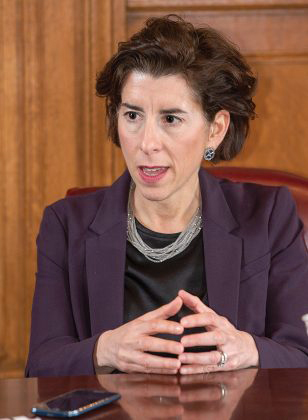Rhode Island has a budget deficit, again.
By definition, a structural deficit is a persistent budget situation in which revenues are growing slower than expenditures. And Rhode Island has had one for years, as growing revenue fails to overcome expenses.
Gov. Gina M. Raimondo recently said that she is trying to address what could be a cumulative $200 million deficit in the fiscal 2021 budget.
Raimondo has said she is still evaluating options. An effort to legalize recreational marijuana, which she said she will pursue despite legislative opposition, could net the state millions in new tax revenue.
Senate President Dominick J. Ruggerio, who opposes marijuana legalization, said he would like to see more efficiencies in the budget to address the deficit. House Speaker Nicholas A. Mattiello said Raimondo should not consider tax increases in her spending plan. “We have a lot of management issues in state government, and we have to stop the overspending in some departments,” he said.
In mid-November, state budget officials reported the current fiscal year is expected to close with a $4.1 million deficit despite a strong job market and rising payroll and sales taxes.
On the revenue side, state tax collections were up by 3.9% from July through September over the same period last year, leading to a projection of a $38.4 million increase in state tax revenue for fiscal 2020 beyond what had been forecast.
Sales tax collections are expected to rise by nearly 6% this fiscal year, fueled by internet sales, which are now taxed in Rhode Island. A 2% increase had been previously forecast.
For all that, the state is still in a deficit because expenses in recent years have outpaced revenue gains.
The situation at the R.I. Department of Children, Youth and Families illustrates the difficulty in closing the deficit.
DCYF, where the number of children in state care has increased over the past several years, has by far the most significant cost overrun in the current state budget.
The $22 million deficit in that department, out of a $165.1 million budget, is attributed to increased spending on group-home care, foster care, adoption and guardianship subsidies, and on home-based services, according to the R.I. Office of Management and Budget. Overtime costs have risen as well, as DCYF grapples with personnel turnover and higher caseloads.
Department leaders, addressing members of a House finance subcommittee in December, explained that they are trying to shift children in foster care to less-intensive and less-expensive settings. That will require more-traditional foster families and homes.
Womazetta Jones, secretary of the R.I. Executive Office of Health and Human Services, testified that an investment in 14 new licensing employees will increase approved foster homes and help move more children to more-traditional settings. The department estimates that 23% of children in group-care settings could be in more-traditional homes if more foster homes were available.
Cost savings is not necessarily the goal, Jones said. “That was not our motivation for this. Our motivation is ensuring the child is placed in the right type of home at the right time,” Jones testified.
Mary MacDonald is a PBN staff writer. Contact her at Macdonald@PBN.com.












